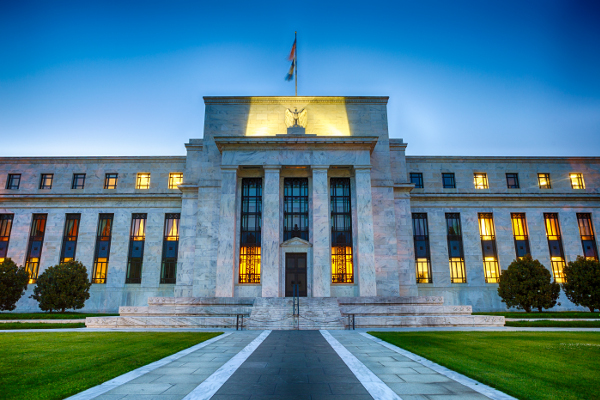The US Federal Reserve’s unprecedented policies fail to boost market confidence
While the Federal Reserve’s commitment to open-ended quantitative easing removes some uncertainty faci…
24th March 2020 11:19
by Tom Bailey from interactive investor
While the Federal Reserve’s commitment to open-ended quantitative easing removes some uncertainty facing investors, two key concerns remain.

Since the global outbreak of the coronavirus, many of the measures taken by governments and central banks around the world have been described as “unprecedented”. The latest such measure has been the announcement from the US Federal Reserve that they will engage in unlimited quantitative easing and start to lend directly to certain US businesses.
In the surprise statement on Monday (23 March), the Federal Reserve said that it would buy unlimited amounts of US government bonds and other financial assets, making quantitative easing (QE) “open ended.” However, the Federal Reserve’s QE buying will not just include the usual government debt. For the first time, the central bank will be able to buy corporate bonds, including through the purchase of bond ETFs. The intention of these previously unimaginable measures is to ensure borrowing costs remain low and financial markets stable.
The Federal Reserve also announced it would provide direct funding to certain companies, through its new “Main Street Business Lending Program”. This is huge change from how it usually operates. Typically, the central bank lends to other banks, whose job it is to lend to other businesses in the rest of the economy. Now, however, as Kevin Boscher, chief investment officer of Ravenscroft notes: “The Federal Reserve is now effectively the direct lender of last resort to both the real economy and the financial system.”
- ETF portfolio: global markets feel coronavirus fear
The US market cared little for these unprecedented announcements, with markets in the US once again closing down on Monday’s trading (23 March). The S&P 500 closed down 2.9%, the Dow Jones Industrial Average 3% and the Nasdaq 0.3%. Both the S&P 500 and the Dow Jones have now given up all their gains since Donald Trump became president at the start of 2017.
According to Pantheon Macroeconomics, while the Federal Reserve’s commitment to open-ended quantitative easing and the purchase of corporate bonds removes some uncertainty facing investors, two key concerns remain. First, the extent and duration of the spread of coronavirus is still unclear. Monetary policy does not remove this key uncertainty.
Second, the fiscal response of the US to the virus is still unknown. As Paul Donovan, chief economist at UBS Global Wealth Management notes, the crucial part of the Federal Reserve’s new measures is its commitment to unlimited purchase of bonds and other assets. With this, says Donovan: “The Federal Reserve allows fiscal policy to be funded.”
Unfortunately, the US Congress once again failed to pass a proposed $2 trillion bailout plan. Broadly, members of the Democrat Party see the plan as being too generous to businesses and not doing enough to help workers. Senior Democrat politician Nancy Pelosi has unveiled a rival $2.5 trillion proposal.
- A rise in dividend cuts looks likely: 12 shares that look vulnerable
This article was originally published in our sister magazine Money Observer, which ceased publication in August 2020.
These articles are provided for information purposes only. Occasionally, an opinion about whether to buy or sell a specific investment may be provided by third parties. The content is not intended to be a personal recommendation to buy or sell any financial instrument or product, or to adopt any investment strategy as it is not provided based on an assessment of your investing knowledge and experience, your financial situation or your investment objectives. The value of your investments, and the income derived from them, may go down as well as up. You may not get back all the money that you invest. The investments referred to in this article may not be suitable for all investors, and if in doubt, an investor should seek advice from a qualified investment adviser.
Full performance can be found on the company or index summary page on the interactive investor website. Simply click on the company's or index name highlighted in the article.